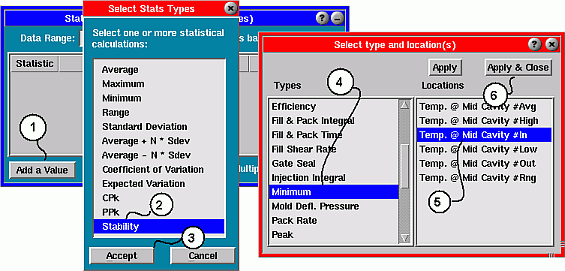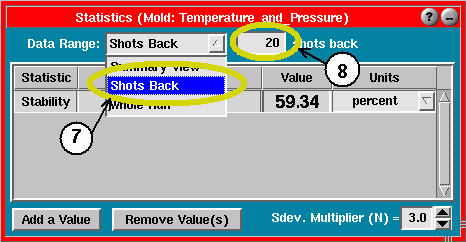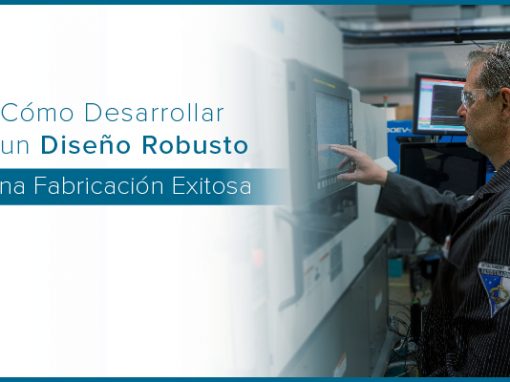Tip of the Day 158: Stability Revisited in Statistics
We have found some customers saving templates, sampling parts or choosing alarm settings while a process is still changing. This leads to poor decisions and later problems with bad parts accepted (or good rejected) or restoring a process to a bad template.
Tip #78 presents a thorough discussion of process stability. This includes such things as knowing how much time it takes for a mold temperature change to stabilize. Tip #133 shows how the Alarm Settings tool (after Release 8.6) asks you to wait for the process to be stable before selecting the first alarm levels.
A “Stability” value is also available in the “Statistics” tool in release 8.6 and after. A common confusion has been that “stability” means “no variation”. This is not true. A stability number of 100% means that the variation in the process is random. Random variation does not depend on what has happened over time. It is just “natural” variation†. A lower stability value means that something has been driving the process change. It could be a rising or falling value, cycling values, a sudden step change with process adjustment or a spike. A break in cycle drives mold temperature lower until enough shots have come in to warm up the mold.
Here are the steps to select stability on one summary value, mold temperature in this case.

How do you use it?
First, choose the “Shots Back” selection and start with say 20 shots.

We like to see stability numbers for most summary values somewhere above about 97% for 10 – 20 shots. Then you can make decisions in part sampling, alarm settings and so on. For example, in a recent designed experiment with 16 runs we put up stability numbers on the values most likely to predict part quality: cycle integrals for cavity pressures (we used #Avg), mold temperature (minimum at the temperature sensor), Average Value / Stable Hold Pressure. Each change for the next experimental run caused the stability number to drop dramatically because of the sudden step (in temperature, for example). We waited until the stability numbers rose above 97% before we sampled parts. This makes sure all parts in the mold are sampled with the same plastic variables. The plastic variables take longer to stabilize than just switching a machine or chiller control.
One customer has built standard operating procedures to check the stability numbers at each process startup. That way he can be certain that the auxiliary equipment (chiller, hot runner controller) have not become ornery or mal-adjusted, driving cyclic change. If the operator does not see the stability number climb to its normal‡ range after startup he finds a technician to help discover the root cause and fix it. They usually start by looking at the values of interest on the summary graph and looking for trends, cycles, steps or spikes.
Additional Notes
- The sort of stability we are discussing here is not the same as the “Process Stability Dashboard” (PSD) values. In the PSD context we are measuring plant-wide stick-to-your-process-setup-sheet stability. An unstable plant is one in which the processes are being adjusted or tweaked, often without justification.
† The “Coefficient of Variation” statistic is used to judge the “natural”, random variation in a process. Some processes and values run with more variation than others. “Coefficient of Variation” values below 0.1% are usually quite good. Values going over 1 – 2% mean that some analysis should be done. Is this the best that can be done for variation based on the part, runner and so on? Or is there some problem like random coupling and de-coupling of the process as the part fills before transfer and after.
Note: “Coefficient of Variation” = “Standard Deviation” divided by “Average”.
‡ Not all processes or summary values are as stable as others. For example the barrel temperature controllers can sometimes create minor, cyclic variation in a summary value like Effective Viscosity. The “Stability” value may see this and report a number lower than the 97% we would like. This does not necessarily mean that the parts are bad or that there is any reason for panic. For each process and chosen value you need to learn what the normal stability is and whether it matters to part quality or not.
It was difficult to write this tip without being wordy or obtuse. Feel free to drop me a note if you need more clarification.

